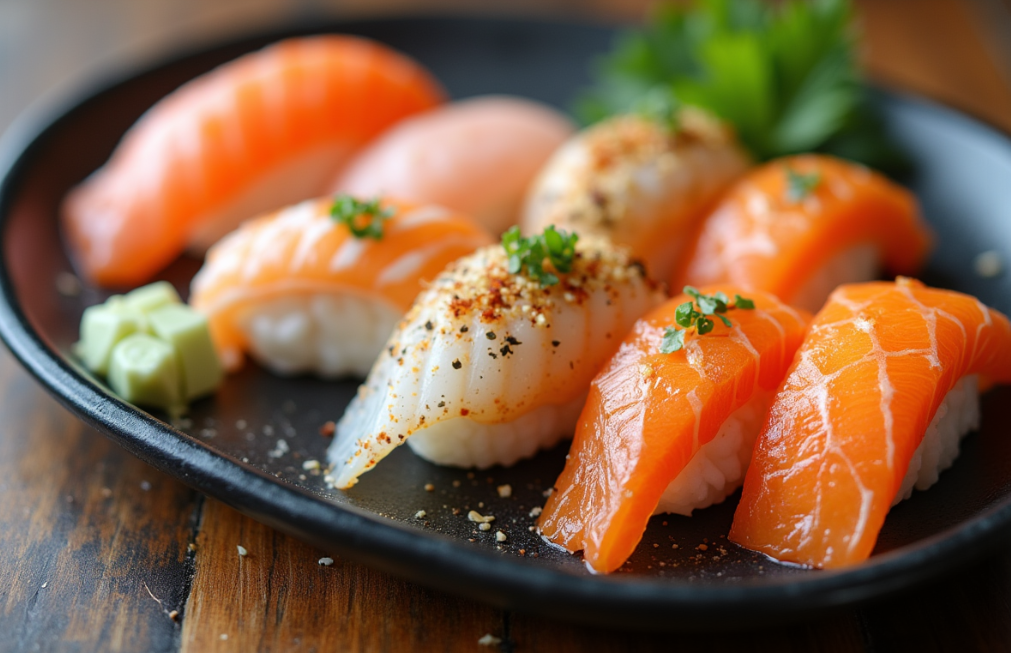The Science and Aesthetics Behind Sushi
Sushi is one of the icons of Japanese cuisine, and is not only popular in Japan, but also around the world. As international exchanges have become more frequent, sushi has evolved around the world, incorporating local ingredients and flavors to form regional variations of sushi, but the core concept of its preparation and cultural connotations have always been preserved.
Seafood is the soul of sushi, and the richness and variety of seafood brings a delicious flavor to sushi. Common seafood used in sushi includes salmon, tuna, sweet shrimp, eel, and arctic shellfish. All of these seafood require a high degree of freshness and are best caught or purchased on the same day. These seafood need to be delicately processed, such as slicing and de-shelling, before making sushi to ensure their presentation and flavor in the sushi.
In addition to rice and seafood, vegetables and other ingredients add richness and color to sushi . Common vegetables include cucumber, avocado, carrot, and shiso leaf. Seaweed is also used, which is roasted to give it an aromatic and crunchy texture, and wrapped around the outside of the sushi to add layers of texture. The combination of these vegetables and toppings gives sushi a rich and varied texture, as well as a balanced nutritional profile.
The sushi is not only mesmerizing in taste, but also presents a feast of beauty in the eyes. Colorful sushi plate, color coordination, so that people in the taste at the same time enjoy a visual feast. The visual art of sushi makes eating not just a taste treat, but an all-around sensory experience.
Nate
Beijing Shipuller Co., Ltd
WhatsApp: +86 136 8369 2063
Web: https://www.yumartfood.com/
Post time: Aug-15-2025
